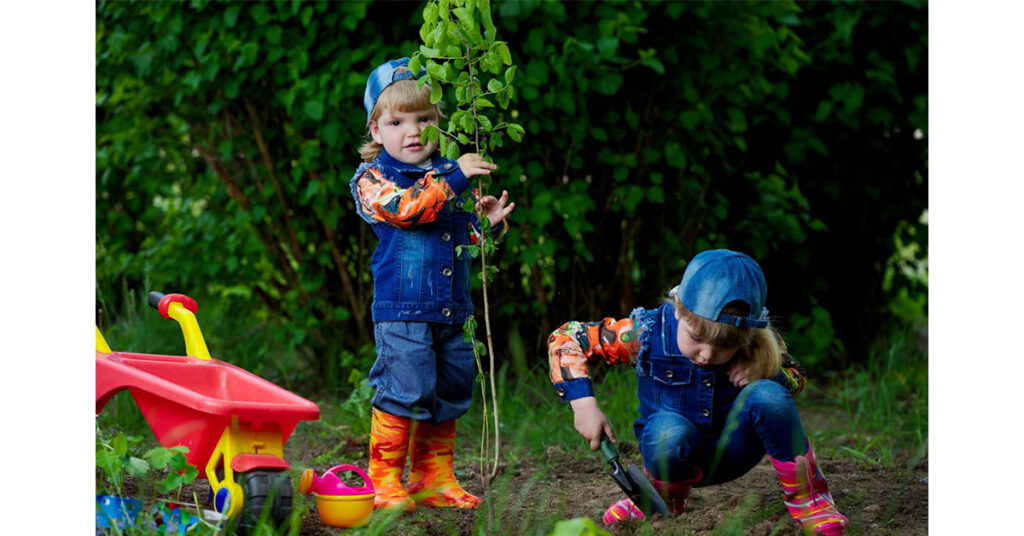
Behind the bricks: a story of authenticity and sustainable choices
At Coir Products by Salike®, we take pride in the quality of our products and the positive impact we make on the communities who help

March 20-26, 2023 is #TreesAreTheKey Awareness Week, a new campaign that coincides with the International Day of Forests, which falls on 21st March. In this blog post, we share some tips and suggestions on planting trees in your garden. At the same time, March 22, 2023 is also World Water Day, where this year’s theme focuses on making commitments and accelerating change to solve the world’s water crisis. So read on to learn more about how planting trees can also help conserve water.
Why plant trees?
Trees continue to be under threat from not just human activity, but also from pests and diseases. According to the Woodland Trust, climate change, pollution, inappropriate development, growing populations especially in urban environments, as well as diseases and pests, are among some of the common issues adding pressure on trees, woodland, wildlife, and the wider environment. As such, planting trees, whether in your garden, schools, or community, has huge environmental benefits.
Furthermore, planting native trees can help the local ecosystems. They become a haven for wildlife, with native plants seen to support significantly more wildlife as compared to non-native species. They are also adapted to the local climate as well as soil type, and are thus likely to survive longer and involve low maintenance.
Before planting a tree
If you are new to tree planting, keeping in mind the space you have for growing is important. Think about the ultimate height and spread of the tree and the space available. Although trees start off small, their roots and branches may spread beyond your space.
Get to know the growing conditions as well as the best time to plant trees. Different trees have different requirements. So check things like preferred soil type, sunlight trees need to grow, and the distance required from other established trees, among others. Also, be mindful of wind, and how you plan to water it. Do some research to better understand what trees thrive best in your area.

Choosing a tree to plant
According to the RHS, trees that are suitable for planting in coastal areas include hawthorne, whitebeam, and rowan, while maple, willow, and barberry, are among the trees that are suitable to be planted in industrial or built-up areas.
BBC Gardeners’ World recommends choosing trees with berries that can help attract birds and other wildlife, as well as providing perches and nesting sites for them. In the meantime, opting for favourites like apples, pear, cherry or other small fruit trees means you can enjoy plenty of wonderful fruits.
Some popular native trees you can plant in your garden include blackthorn, silver birch, crab apple, elder, and goat willow.
Growing trees in coir pots (coco pots)
Worried about space? You can also grow trees in CoirProducts.co.uk coir pots. With a huge range to choose from when it comes to our natural and biodegradable pot, plants grow through the coir pot, which means, if you want to transplant later, you could do so with the pot itself, without the plant having to go through any shock. Coir also retains water and moisture, facilitates air porosity, and has excellent drainage, all of which help plants develop strong and healthy root systems. Pick a larger pot, giving roots plenty of room to breathe and grow.
If growing trees in coir pots, choose-slow growing or dwarf varieties, while you could also try lollipop trees that have a single step and a rounded crown or even multi-stem trees. Some popular trees for pots include flowering dogwood, Italian cypress, citrus trees, Japanese maple, olive, and bay trees. Remember though, as with trees grown on the ground, providing them adequate water is important.
Planting trees, conserving water
Urban trees help conserve water, absorbing and filtering water that infiltrates into the soil, while also helping to prevent soil erosion. In turn, they contribute to the development of sustainable communities.
Maximising the water conversation benefits of trees is important, and there are many ways to do that. Here are a few tips for planting trees and conserving water:
Will you be planting any new trees in your garden this time around? If you are new to planting trees, start small, take time to get to know your environment, and go with what you love to grow!
needs: using natural and organic mulch, including CoirProducts.co.uk coir husk chips is healthy for the environment. Apply the mulch layer around 3-5 inches deep, extending at least as far as the drip line.
Will you be planting any new trees in your garden this time around? If you are new to planting trees, start small, take time to get to know your environment, and go with what you love to grow!

At Coir Products by Salike®, we take pride in the quality of our products and the positive impact we make on the communities who help

In today’s world, gardening is much more than a pastime; it’s a mindful choice to support biodiversity, boost sustainability, and cultivate well-being. At CoirProducts of